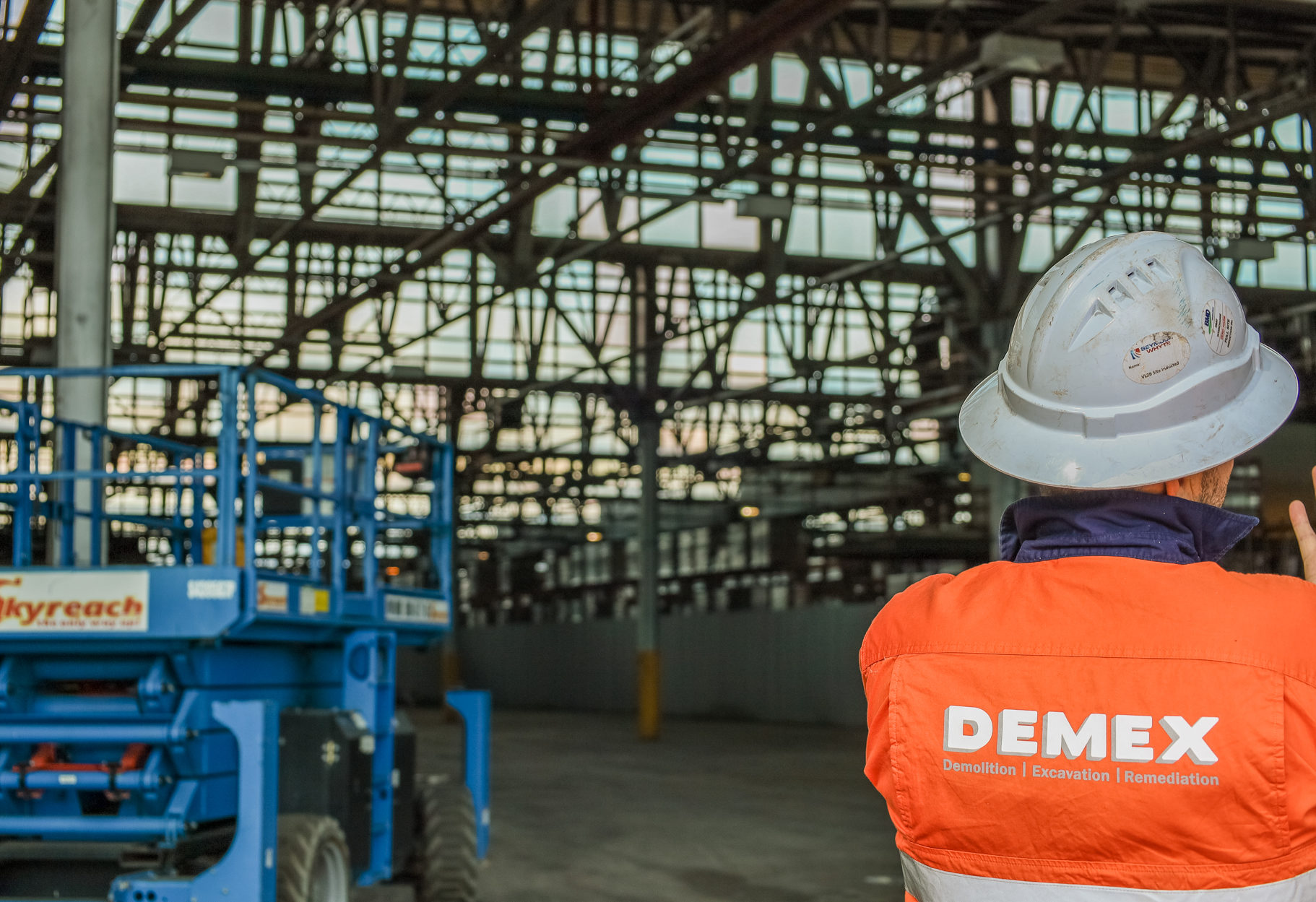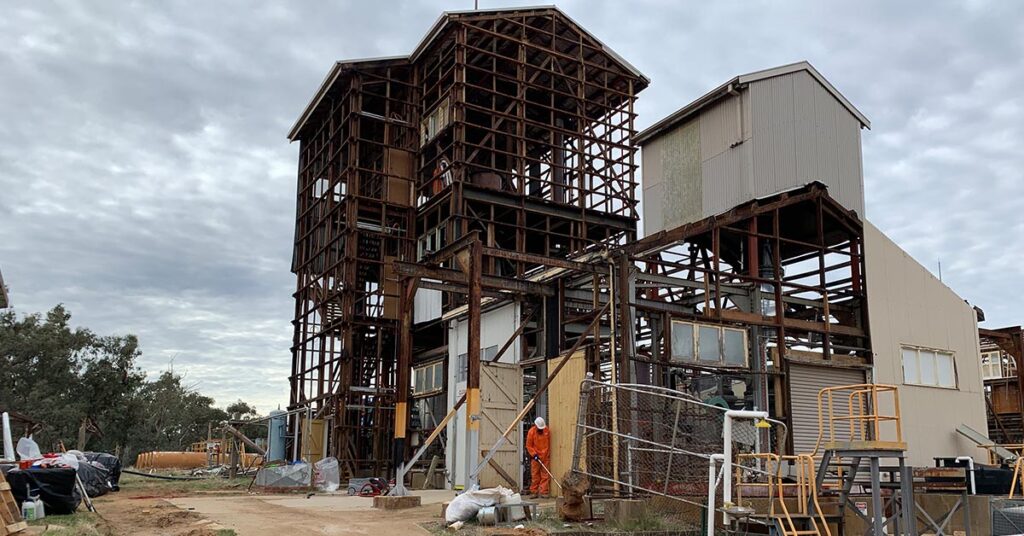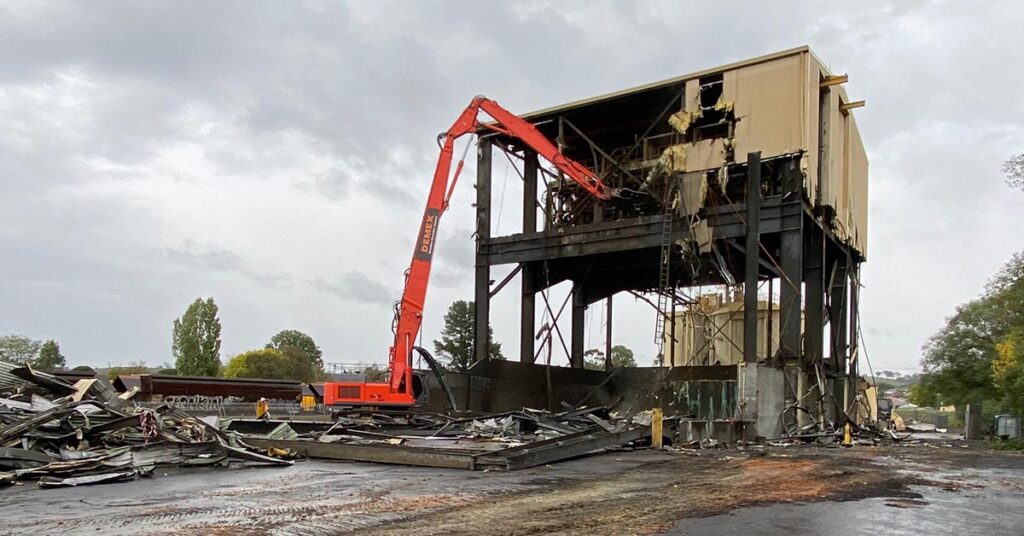The role of Industrial demolition contractors in a circular economy

How industrial demolition contractors contribute to circular economy demands
Although not widely appreciated, industrial demolition contractors play a key role in meeting the social, environmental, and economic demands of a circular economy.
In this article, we aim to build awareness of how this is achieved by considering some of the challenges currently faced in the mining, manufacturing, and heavy industry sectors at various stages of an asset’s life cycle.
Where do industrial demolition contractors fit in the asset life cycle?
Towards the end of an asset’s life is often the first time owners and operators really get serious about demolition (deconstruction) considerations.
Additionally, many asset owners, such as mine, power plant, and manufacturing facility operators don’t understand the technical nuances of demolition, and see it as a blip on the pathway to end-of-life closure activities. Leaving closure planning until the time it absolutely needs to occur is a high risk activity because important considerations may be overlooked. A lack of understanding of the challenges can also mean that opportunities to realise value, such as those listed below, are missed.
- Formulation of the optimal demolition methodology to deliver a project safely and effectively
- Accurate calculation value that can be extracted from salvaged materials
- Capitalising on recycling opportunities that contribute to a circular economy and a client’s internal targets and commitments
- Identifying and mitigating risks that can stall or prevent other closure activities from progressing, ultimately affecting the ability to meet closure or relinquishment obligations.
Engaging industrial demolition contractors with specialist knowledge and experience about how to address considerations like this is a prudent investment of resources, and should be undertaken well before closure.
Preconceived ideas about industrial demolition contractors is a limiting factor too. Ignorance about the degree of technical acumen and experience required to deliver demolition services consistently and safely in high risk environments, such as on mine sites, can prevent the best and most cost effective solutions seeing the light of day. The perception that demolition companies come in with a wrecking ball and simply knock structures down is both dated and inaccurate.
In fact, the opposite is true. In the industrial arena, demolition is highly technical and consequently, contractors must comply with a long list of standards, regulations, and legislation. In doing so, a demolition contractor functions as an important conduit for important sustainability outcomes, such as:
Control and manage waste on site and after it’s removed from site, regardless of whether it’s a remote mine, inner city office block, or outer suburb factory.
- Preventing the disposal of materials to landfill where possible
- Methodical segregation of waste to optimise salvage rates of materials
- Adhering to internal procedures and regulations with respect to waste disposal
While none of this is rocket science, there is often a wide gap between concept and implementation, and these actions are tangible ways that industrial demolition contractors make the principles of circular economy real.
>>> Learn more: Read about our project success on the Mulwala Explosives Facility in New South Wales here.
Remove or leave in situ: Which should you choose?
An asset owner’s capacity to fulfil circular economy principles will always be predicated on making sound and defensible decisions.
Often asset owners are weighing up whether they should demolish structures or keep them in situ, frequently opting for the latter on the basis there is low to no cost.
It’s a fallacy to think that leaving decommissioned assets in situ does not incur costs to a business. Naturally, these costs will be thought of as financial, but they can also be measured as risk. Leaving legacy assets in place heightens risk, and in the event of a serious incident such as the collapse of structure, reputational damage frequently ensues.
By consulting with an industrial demolition contractor, the real costs of removal versus a decision to leave legacy assets in place can be calculated and weighed up in the context of a business’ ESG obligations and appetite for risk.
>>> Learn more: Read about our project success on the Colgate Palmolive factory demolition, which included demolition of multiple structures using various demolition methods, including induced collapse.
We’ve found asbestos. Now what?
With many ageing mine, power, and manufacturing assets built with asbestos containing materials (ACM), unexpected finds are frequently a feature of asset closure projects.
Often the asbestos even finds its way into the soil, adding further complexity to projects and making it challenging to fulfil regulatory requirements and sustainability commitments.
Industrial demolition projects like these demand detailed planning and strict adherence to storage, handling, and disposal requirements by experienced asbestos trained operators. Collaboration between the project team and client is key, which is one very good reason for including an industrial demolition contractor on your project team.
Like other aspects of closure cost planning, demolition costs can be seriously underestimated, but assessment of the risks – including the presence of asbestos containing materials – can help with managing costs down and identifying solutions.
>> Learn more: Read about our project success on the Old Blayney Dewatering Plant in Blayney, located in western New South Wales
DEMEX is a leader among industrial demolition contractors. We provide support to asset owners in the mining, energy, and industrial sectors who face challenges with decommissioning, demolition, and asset closure. For more information on how we partner with clients to achieve their closure objectives, contact us directly on info@demex.com.au.






